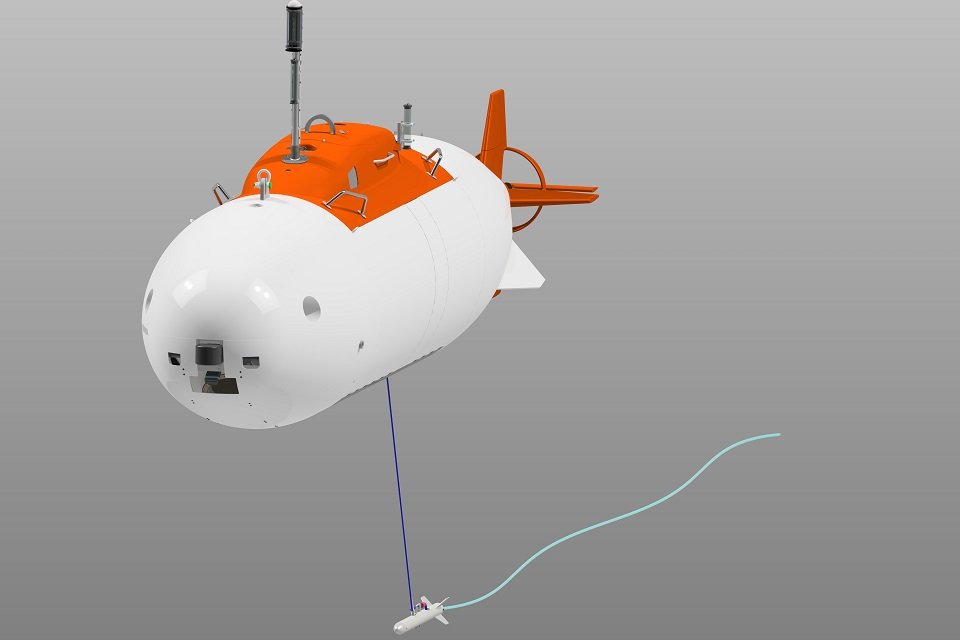The Defence Science and Technology Laboratory (Dstl) provides Ministry of Defence (MOD) with science and technology advice for current and future capabilities including generation after next research. Maritime autonomous systems (MAS) are likely to be a major component of the future fleet, operating in 3 domains at the front line and through to logistics and support. The research done now, and the investment into UK industry, will help prepare the Royal Navy and bring in more MAS capability.
MAS may be employed in anti-submarine warfare (ASW) to better defend UK waters and Royal Navy fleets from underwater threats. Dstl and the Defence and Security Accelerator (DASA) have been leading technical research to enable and understand MAS contribution to the anti-submarine warfare role through investment into: uncrewed underwater vehicles, towed arrays from uncrewed systems, navigation, sensing and concepts of operation.
To further investigate the concept and feasibility of underwater MAS, Dstl and DASA worked closely with the Royal Navy and Plymouth-based MSubs on the development of the eXtra Large Uncrewed Underwater Vehicle (XLUUV). Initially a crewed submersible (S201), it was converted to autonomous control and set up as a testbed for technologies.
XLUUV is 9 metres long and just under 9 tonnes in weight, with a large internal space at 1 atmosphere for electronics, and freeflooding payload spaces fore and aft. It has an endurance of up to 48 hours, and top speeds of up to 12 knots. It was just over a year from crewed system to first autonomous dives, and further iteration of the control and software is ongoing.
As a testbed XLUUV has trialed Sonardyne Sonars and SprintNav, Seiche and SEA towed arrays, Vizguard optical software and Petard’s camera system. The autonomous control system was also shared with the Mayflower surface vessel, also developed by MSubs and other partners, and its ground breaking transatlantic crossing.
The Royal Navy already operates small maritime autonomous systems, so the XLUUV was the first at this size and presented its own opportunities and challenges. The XLUUV was deployed to the Robotic Experimentation and Prototyping of Maritime Unmanned System (REPMUS) 22 as the first international operation of this vehicle. The SEA Krait array was integrated and the system successfully operated as an anti-submarine warfare asset against international targets in the ocean off the coast of Portugal.
The impetus and confidence this project has given MOD has influenced such as the recently announced Project Cetus crewless submarine and furthered MOD research into maritime autonomous systems capability. Dstl will continue to work with the Royal Navy and its innovation accelerator, NavyX, to research and develop MAS technology for the future, using its expertise and maritime assets such as MAST (Maritime Autonomy Surface Testbed) vessels.

